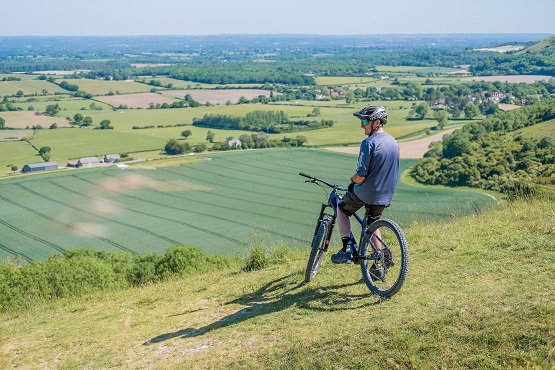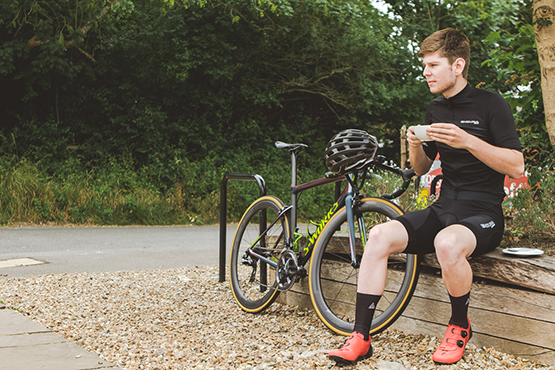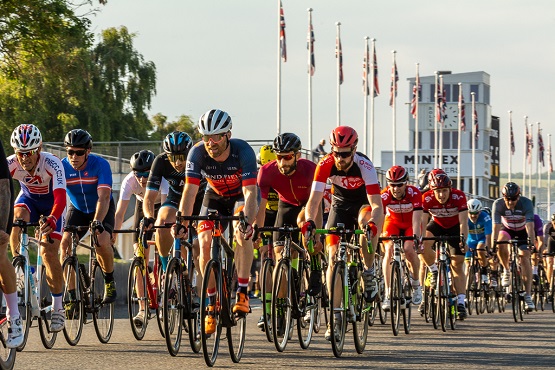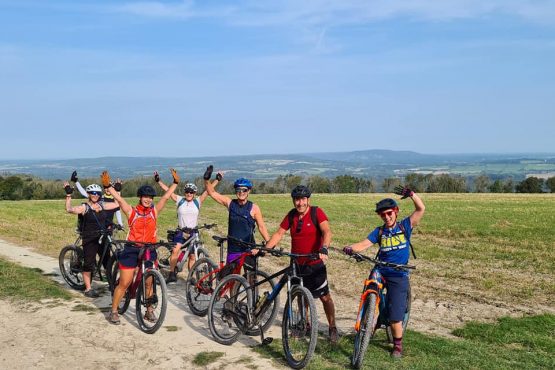Make sure you have the right kit and equipment for you and your bike:
- Check the route. Ordnance Survey maps will give you a good idea of any changes in gradient and if the route takes you down major roads
- Carry a couple of spare inner tubes, bike pump, tyre levers, spare chain links and a multi tool – if you are riding in the countryside it might be a long walk to the nearest bike shop
- Lights – essential during the winter but worth taking with you in case you end up out for longer than expected
- Make sure your bike is roadworthy, check the brakes, as you will need them for the descents
- Carry at least two bottles of water, energy gels and bars and take these at regular intervals – once you are thirsty you are already dehydrated
- Layer clothing; make sure it is water and windproof – tops of hills can be exposed even in summer and if you break down or need to stop for any length of time you can become cold very quickly
- Sports glasses can be useful as they keep dirt/grit and bugs out of your eyes
- Make sure you have the right protective equipment for you and your bike
When on the road:
- Be aware of other traffic, especially in rural areas – drivers may not be expecting to see cyclists
- Expect to share the road with large farm vehicles and buses, these may need more room than anticipated especially on narrow country roads
- The competitive edge – some segments of a route may allow you to go faster than is safe to do so – road conditions and terrain can change suddenly. Beware of hidden dips and blind bends
- When riding in areas shared with pedestrians, remember to ride considerately. Moderate your speed and provide an audible warning to pedestrians to alert them of your presence
Riding in a group:
Ensure that cyclists in the group know how to ride in a group. Agree on signals and then follow these top tips to maintaining a safe group riding position:
- If you are riding two abreast, keep your handle bars in line with the cyclist next to you and elbows between 15- 50cm apart
- Maintain a steady pace and a straight line; whilst it is tempting to get half a wheel space in front, this can lead to an increase in the overall pace
- If you are a rider on the outside of a corner try and increase the speed a little to maintain your handle bar position
- Do not pin the inside rider to the kerb, allow them some space to avoid, drain covers and road debris
- Conversely if you are the inside rider don’t drift too far out from the kerb as the outside rider may end up on the opposite side of the road riding into oncoming traffic
- Make room, which will allow outside riders in behind you should there be a problem




